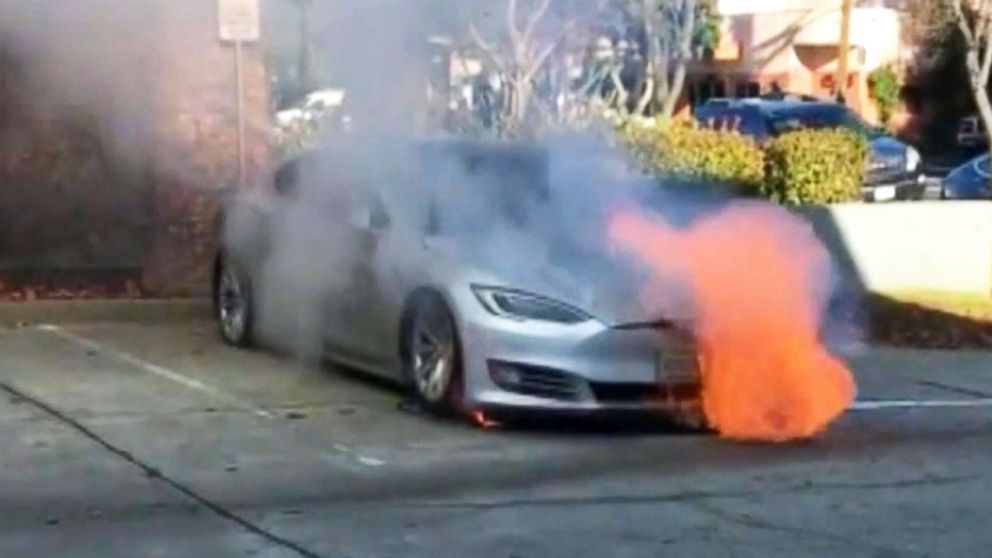Blow it out your ass. Gas cars, if they catch fire, do so because of a gas spill or a freak hose leak onto hot exhaust or a collision or some correctable issue usually, whereas EVs catch fire for no foreseeable or correctable reason, and burn hot and can't be put out and incinerate, like this Tesla who was being towed for a mere flat tire, caught on fire for no reason, then continued to burn for 16 hours reigniting despite firefighters repeatedly thinking they had put it out.
Tesla Model S bursts into flames twice in one day, sparking an investigation.

abcnews.go.com
Brand new car, gets a flat tire warning. Takes a fire crew thousands of gallons of water and 16 hours later, the owner is left with this:
View attachment 817062View attachment 817063
What people don't realize with a battery that can charge enough to power a car 150-200 miles in just 10 minutes is that it still takes the same amount of energy as an EV battery that takes 4-8 hours to charge, you are simply dumping a much higher current into a battery that has far lower internal resistance--- ie, acts like a dead short with capacity. And a battery that can absorb so much energy in 10 minutes will be capable of RELEASING far more energy far more quickly as well, so you are in effect sitting on a ticking time bomb that could go off at any time, over a simple collision or some small internal defect.
And while the "quick fill" alleviates the obvious, immediate problem of an EV, you still can't find working charging stations hardly anywhere even in California, you are still left carrying energy produced elsewhere and storing it instead of producing it as you drive yourself directly like a gas car, and you are still left with the enormous cost of the cars, the environment impact of strip mining all of these precious metals using mostly slave labor in 3rd world countries and the massive expense of replacing the batteries ever 9-10 years.



